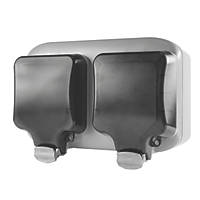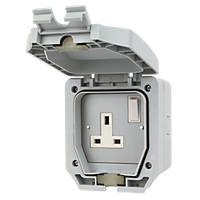I'm toying with the idea of making preparation for an EV on my (private) driveway and, at the same time do a bit of "forward thinking" in case I, or ther next person that lives here, wants to fit an induction hob in place of the current gas one.
I believe the charge point is something like 7kw and a similar figure for the hob.
Essentially I'd like to do the cable run myself (it's a bit awkward and time consuming) and have a sparks connect it, plus the fused switches, of course
.
My thoughts revolve around coming from the electric meter (which is surface mounted in a cabinet on the front wall of the house) and running up and through the loft and eventually emerging at the attached garage ... no problems with the run there - a 28mm gas pipe follows the same route through the loft.
I had visions of terminating the cable with a two way (fused?) switch just inside the garage and from there running separate SWA feeds to the hob and/or the EV charge point as and when required.
My simple(ish) question is whether a 15 metre run of 10mm SWA cable would comfortably accommodate both purposes. A neighbour has had an EV charge point fitted and their contractor installed an isolating, fused switch just under the electic meter cupboard (same as mine would be) having taken tails from the incoming supply ... they then just ran the SWA round the corner to the charge point. My charge point isn't so conveniently placed.
This is my first enquiry, obviously I'll need to speak to suppliers and/or contractors but the choice of apparatus seems ridiculously variable at this early stage - I'm hoping it'll be clearer when I dig deeper.
Thanks.
I believe the charge point is something like 7kw and a similar figure for the hob.
Essentially I'd like to do the cable run myself (it's a bit awkward and time consuming) and have a sparks connect it, plus the fused switches, of course
.
My thoughts revolve around coming from the electric meter (which is surface mounted in a cabinet on the front wall of the house) and running up and through the loft and eventually emerging at the attached garage ... no problems with the run there - a 28mm gas pipe follows the same route through the loft.
I had visions of terminating the cable with a two way (fused?) switch just inside the garage and from there running separate SWA feeds to the hob and/or the EV charge point as and when required.
My simple(ish) question is whether a 15 metre run of 10mm SWA cable would comfortably accommodate both purposes. A neighbour has had an EV charge point fitted and their contractor installed an isolating, fused switch just under the electic meter cupboard (same as mine would be) having taken tails from the incoming supply ... they then just ran the SWA round the corner to the charge point. My charge point isn't so conveniently placed.
This is my first enquiry, obviously I'll need to speak to suppliers and/or contractors but the choice of apparatus seems ridiculously variable at this early stage - I'm hoping it'll be clearer when I dig deeper.
Thanks.





